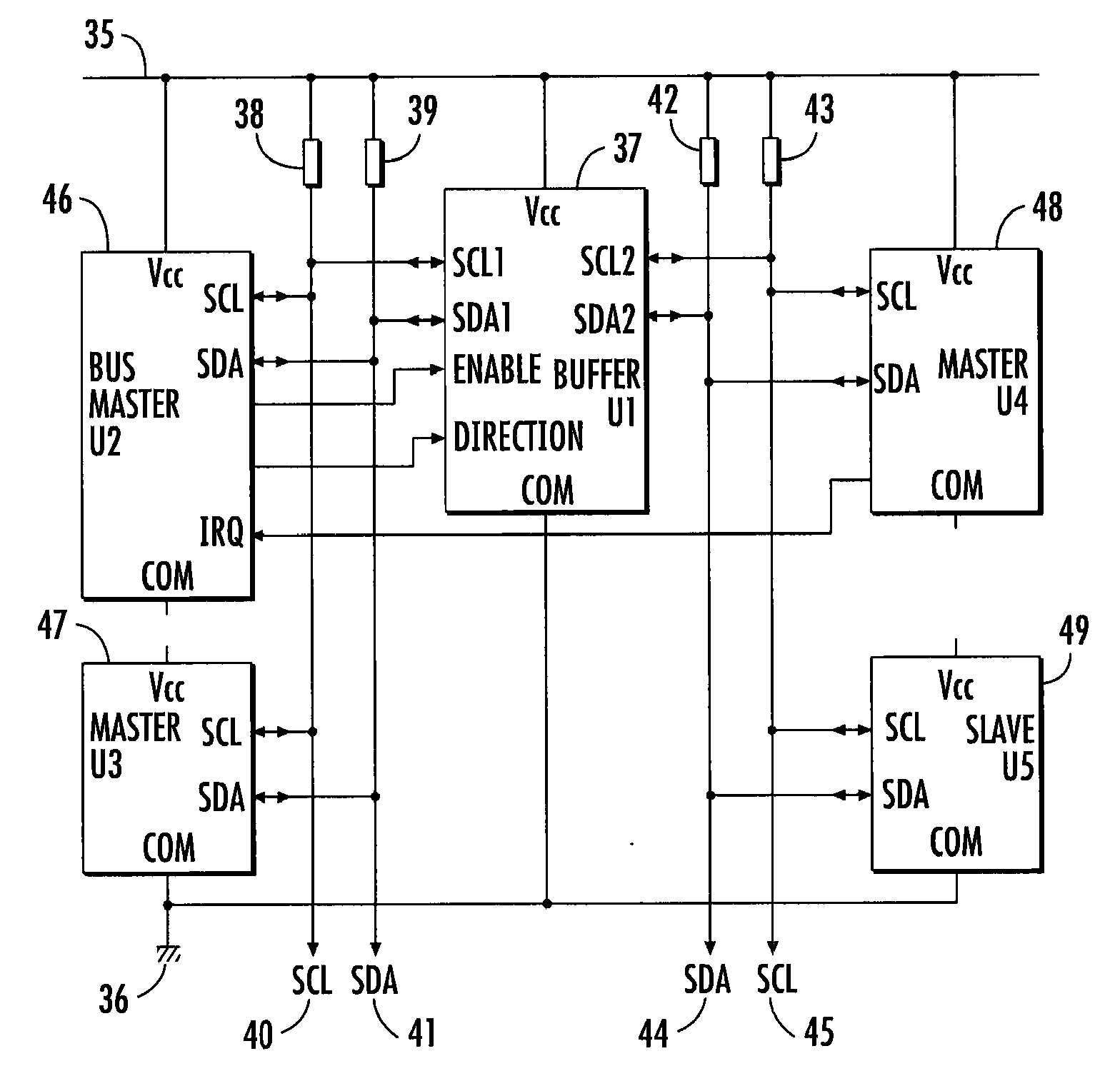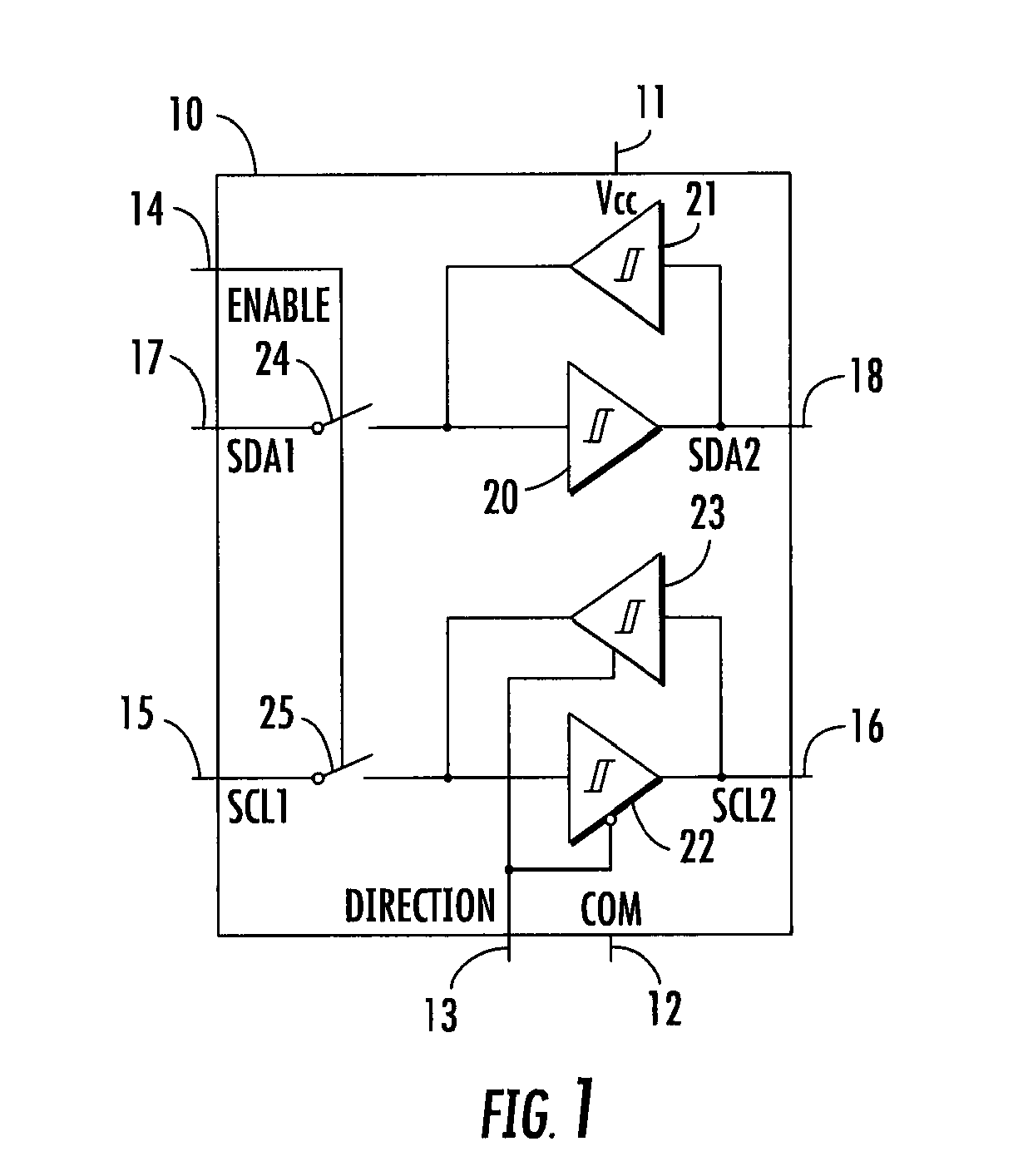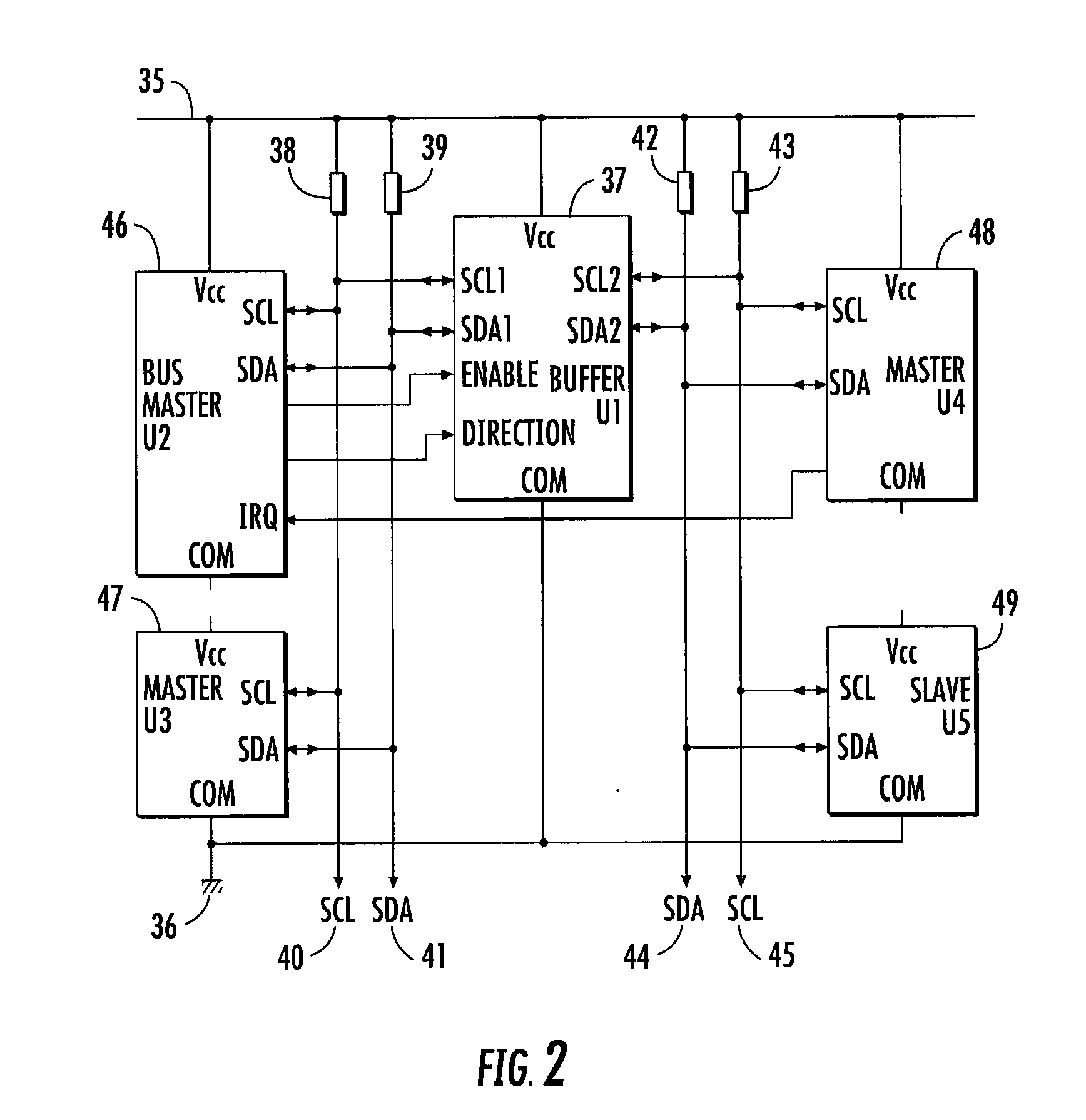Simple Bus Buffer
- Summary
- Abstract
- Description
- Claims
- Application Information
AI Technical Summary
Benefits of technology
Problems solved by technology
Method used
Image
Examples
Embodiment Construction
[0077]The basic structure of the buffer is shown in FIG. 1. The two buffer circuits comprising the upper data buffer are symmetrical, with an output signal that follows the input voltage offering bi-directional buffer action. The lower clock buffer is active in either the forward, or reverse direction, with the signal path direction controlled by a direction input. It also has an enable function applied to both sections of the buffer. That is to the forward or reverse path for the SCL clock signal and to the bi-directional SDA data path contained in the buffer IC.
[0078]The integrated circuit 10 in this example, has 8 connecting pins. There is the positive supply 11 (VCC), the common negative power supply connection 12 (COM or VEE), the direction control pin 13 (Direction) and the enable control pin 14 (Enable), and the inputs and outputs of the two buffer sections.
[0079]The inputs to the buffer are all schmitt inputs to enable it to be used with slowly changing input signals. A resu...
PUM
 Login to View More
Login to View More Abstract
Description
Claims
Application Information
 Login to View More
Login to View More - R&D
- Intellectual Property
- Life Sciences
- Materials
- Tech Scout
- Unparalleled Data Quality
- Higher Quality Content
- 60% Fewer Hallucinations
Browse by: Latest US Patents, China's latest patents, Technical Efficacy Thesaurus, Application Domain, Technology Topic, Popular Technical Reports.
© 2025 PatSnap. All rights reserved.Legal|Privacy policy|Modern Slavery Act Transparency Statement|Sitemap|About US| Contact US: help@patsnap.com



